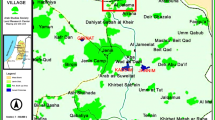Abstract
Agricultural composting is expanding in the United States, with over 7,000 farms currently composting. Based on information collected from the 10 largest producing states for beef and dairy cattle, poultry, and swine, this is largely being driven by the need to find an alternative method to handle livestock mortalities. However, composting is also increasingly being used to recycle crop residues and to improve the handling, marketability, and/or quality of livestock manure. Factors affecting agricultural composting include the availability of land for application of manure or crop residues, proximity of farms to urban areas, environmental policies and regulations, and the support of industry and public agencies via research, education, and financial incentive programs.
In the United States, more farms compost than municipalities, commercial/institutional establishments, and other private sector groups combined (Kashmanian, 1995). The move toward composting is particularly strong within the poultry industry, as many poultry farms have turned to composting to handle their mortalities. However, composting is also increasing among other livestock and crop farms. (In this paper, dry stacking is not considered a form of composting.) There are indications that agricultural composting is more prevalent in certain geographic regions or among certain types of farms. Critical environmental problems are probably a factor in the regional differences, although other contributing factors also seem to be responsible.
To obtain an overview of agricultural composting in the United States, industry, government, and university representatives from the top 10 beef and dairy cattle, poultry, and swine producing states were contacted between January and April of 1995. The representatives provided information about the number of farms composting, the materials composted, composting methods, how the compost is used, and motivating and impeding factors for farms to compost. In addition, information was gathered concerning composting crop residues. In this case, specific applications of crop residue composting were identified and individuals knowledgeable about the applications were contacted for background information.
The information collected provides insights into the status of composting in U.S. agriculture, including trends, motivating and impeding factors, and research and education needs.
Access this chapter
Tax calculation will be finalised at checkout
Purchases are for personal use only
Preview
Unable to display preview. Download preview PDF.
Similar content being viewed by others
References
Donald, J.; J. Blake; K. Tucker; and D. Harkins. (1994). Mini-Composters in Poultry Production. Alabama Cooperative Extension Service, Auburn University, ANR-804.
Fulhage, C. and C. Ellis. (1994). Composting Dead Swine. University Extension, University of Missouri, WQ 225.
Henry, S. (1995). Composting Dead Swine in South Carolina. Proceedings of Clean Water - Clean Environment - 21 st Century, American Society of Agricultural Engineers, Kansas City, Missouri, March 5–8.
Kashmanian, R. (1994). Building Support for Composting in Agriculture. BioCycle, 35(12),67–70.
Kashmanian, R. (1995). Poultry Industry Finds Added Value in Composting. BioCycle, 36(1),55–57.
Meadows C. and L.J. Butler. (undated). Dairy Waste Management in California: A Survey. University of California, Davis, #240.
Morris, J.; T. O’Connor; and F. Kains. (1994/1995). Alternatives to Dead Stock Removal. Ridgetown College of Agricultural Technology, Ridgetown, Ontario.
Morrow, W; P. O’Quinn; J. Barker; G. Erickson; K. Post; and M. McGraw. (1995). Composting as a Suitable Technique for Managing Swine Mortalities. North Carolina State University, Draft.
Murphy, D. (1992–1993). Minicomposter Dead Bird Disposal. University of Maryland Cooperative Extension, Fact Sheet 642.
Oshins, C. and R. Graves. (1993). On-Farm Composter Directory. Rodale Institute Research Center and The Pennsylvania State University, October, Draft.
Rynk, R. (1994). Almost Mainstream? - A Progress Report on Dairy Manure Composting. Proceedings of The Third International Dairy Housing Conference, American Society of Agricultural Engineers, February 2–5.
Author information
Authors and Affiliations
Editor information
Rights and permissions
Copyright information
© 1996 Springer Science+Business Media Dordrecht
About this chapter
Cite this chapter
Kashmanian, R.M., Rynk, R.F. (1996). Agricultural Composting in the United States: Trends and Driving Forces. In: de Bertoldi, M., Sequi, P., Lemmes, B., Papi, T. (eds) The Science of Composting. Springer, Dordrecht. https://doi.org/10.1007/978-94-009-1569-5_62
Download citation
DOI: https://doi.org/10.1007/978-94-009-1569-5_62
Publisher Name: Springer, Dordrecht
Print ISBN: 978-94-010-7201-4
Online ISBN: 978-94-009-1569-5
eBook Packages: Springer Book Archive




